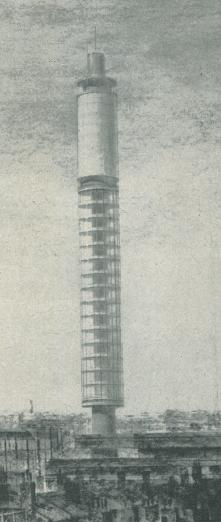
Feb 1961, and The Engineer took a look at the proposed design of a structure which has become one of London’s best-known landmarks: the building known today as the BT tower.
The new tower was required for a variety of reasons, explained The Engineer. But its main role was to support the microwave aerials that were used to carry telecoms traffic from London to the rest of the UK. According the article, it was designed to replace a 180ft high steel mast on the nearby Museum Exchange building, which was being affected by the London’s appetite for increasingly tall buildings.
Reporting on the challenges of building the tower The Engineer wrote that ‘the design envisages a structural connection with the main building 80ft above the ground, where horizontal loads due to wind will be transmitted from the tower, The maximum horizontal reaction at this point is to be 500 tons , but vertical deformation of the tower will not be restrained.’
The reported added that ‘wind tunnel tests are in progress at the National Physical Laboratory to ensure that no resonance phenomena will arise due to steady winds of moderate strength.’
Opened by Prime Minister Harold Wilson in October 1965, the 189m high tower enjoyed the distinction of being London’s tallest building until the Natwest Tower (now known as Tower 42) was completed in 1980.
Today, the building transmits broadcasts via fibre optic cables rather than its distinctive round dishes, and is used as a broadcast transmission centre by ITV, Channel 4, BSkyB and CNBC. Astonishingly, the revolving restaurant at the top of the tower has been closed since 1980.





Glasgow trial explores AR cues for autonomous road safety
They've ploughed into a few vulnerable road users in the past. Making that less likely will make it spectacularly easy to stop the traffic for...